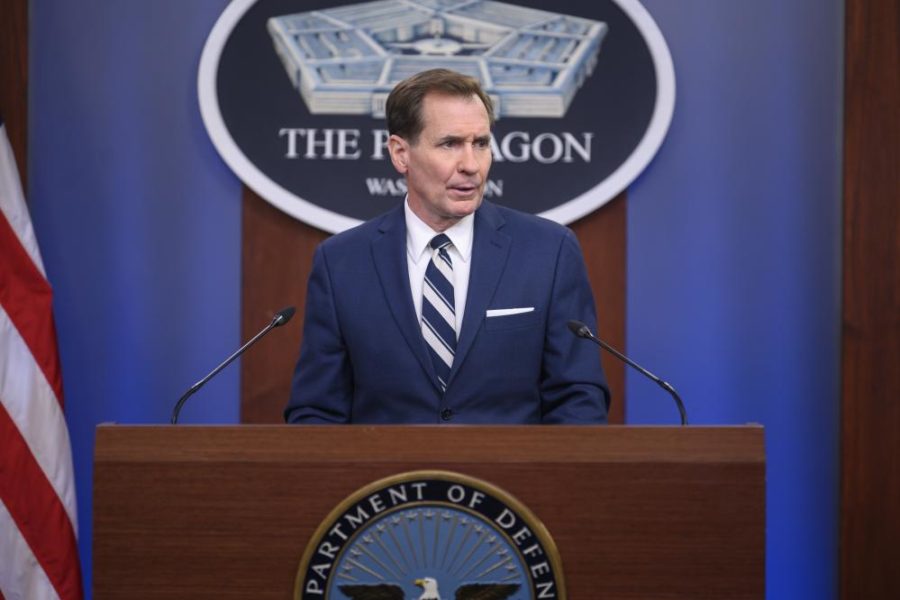As media reports indicate that tens of thousands of Russian troops have massed near the border with Ukraine, the Pentagon remains “concerned” about the situation and called on the Kremlin to explain itself, its top spokesperson said Nov. 10.
Last week, satellite imagery showed a “buildup of armored units, tanks, and self-propelled artillery” in the town of Yelnya, less than 300 kilometers from the Ukrainian border, Politico reported. Since then, more tanks have moved to the region near the border, reported Bloomberg.
Pentagon Press Secretary John F. Kirby confirmed in a press briefing that the Defense Department is monitoring “unusual military activity inside Russia, but near Ukraine’s borders.”
Kirby has previously refused to comment on assessments of how many Russian troops are near the border, but the Ukrainian government has said 90,000 are in the region after a series of drills, Reuters reported.
A similar situation unfolded in April, when Ukraine said Russia massed more than 80,000 troops near its border only to later reverse course.
This time, Russia’s intentions are not clear, Kirby said. “We obviously would like to better understand that. And we don’t want to see any action further destabilize what is already a very intense part of the world,” he said. “We urge Russia to be clear about their intentions and to abide by their Minsk agreements.”
Russia and Ukraine have been in conflict for years now, highlighted by the Russian annexation of the Crimean Peninsula on the Black Sea. The U.S. and Ukraine signed a deal in September to build up the Eastern European democracy’s defenses, and Defense Secretary Lloyd J. Austin III visited the country in October as part of his swing through Eastern Europe.
“The United States calls on Russia to end its occupation of Crimea, to stop perpetuating the war in eastern Ukraine, to end its destabilizing activities in the Black Sea and along Ukraine’s border, and to halt its persistent cyberattacks and other malign activities against the United States and our allies and partners,” Austin said at the time.
On Nov. 10, Kirby declined to explain whether the U.S. had assessed what kinds of units or capabilities the Russians had moved near the border, but he did say the movement was “unusual because of the size and the scope,” adding that “it’s got our attention, no question about that.”
Pressed on why he couldn’t provide an assessment of the Russian capabilities, Kirby referred those questions to the Russian government.
“I would like to see the folks in Moscow get asked these kinds of questions and answer them honestly and transparently. That’s not happening, though, is it?” he said. “So we’ll do the best we can to be as transparent about what we’re seeing, inside the appropriate lines of classification. But we’re watching this and we’re watching that closely.”
Karen Donfried, assistant secretary of state for Europe and Eurasia, told the Associated Press that “any time we see unusual Russian military activity near Ukraine, we make clear that any escalatory or aggressive action is of great concern to the United States.”
